
Sarah Zielinski wanted to be a marine biologist when she was growing up, but after graduating from Cornell University with a B.A. in biology, and a stint at the National Science Foundation, she realized that she didn’t want to spend her life studying just one area of science — she wanted to learn about it all and share that knowledge with the public. In 2004, she received an M.A. in journalism from New York University’s Science, Health and Environmental Reporting Program and began a career in science journalism. She worked as a science writer and editor at the Journal of the National Cancer Institute, the American Geophysical Union’s newspaper Eos and Smithsonian magazine before becoming a freelancer. During that time, she started her blog, Wild Things, and moved it to Science News magazine, and then became an editor for and frequent contributor to Science News Explores. Her work has also appeared in Slate, Science, Scientific American, Discover and National Geographic News. She is the winner of the DCSWA 2010 Science News Brief Award and editor of the winner of the Gold Award for Children’s Science News in the 2015 AAAS Kavli Science Journalism Awards, “Where will lightning strike?” published in Science News Explores. In 2005, she was a Marine Biological Laboratory Science Journalism Fellow.

Trustworthy journalism comes at a price.
Scientists and journalists share a core belief in questioning, observing and verifying to reach the truth. Science News reports on crucial research and discovery across science disciplines. We need your financial support to make it happen – every contribution makes a difference.
All Stories by Sarah Zielinski
-
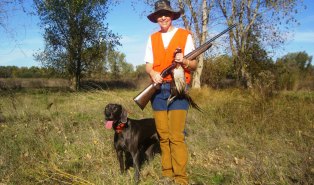 Animals
AnimalsConservationists should make friends with hunters
A survey of outdoor enthusiasts in rural New York finds that both hunters and birdwatchers are likely to engage in conservation behaviors, such as donating money.
-
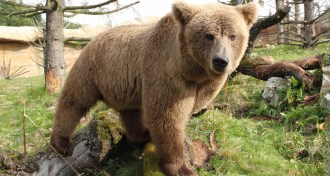 Animals
AnimalsEvidence of ‘yeti’ probably came from a Himalayan black bear
Last year, a genetic analysis revealed two hairs from an unknown species of bear in Asia. A new study finds that they belong to rare Himalayan black bears.
-
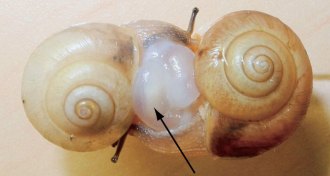 Animals
AnimalsGetting stabbed is no fun for land snails
When hermaphroditic land snails mate, they stab each other with “love darts.” But being darted comes at a price, a new study finds.
-
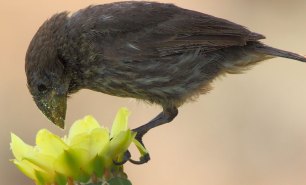 Animals
AnimalsFlowers make the menu for nearly all Galapagos birds
Almost every species of Galapagos land bird has been found feeding on the nectar and pollen of flowers. Such an expansion of diet has never before been observed.
-
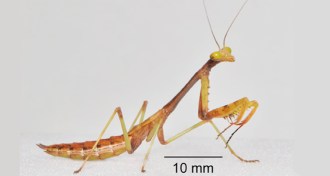 Animals
AnimalsHow a young praying mantis makes a precision leap
Videos of juvenile praying mantises flying through the air reveal how the insects manage to always make a perfect landing.
-
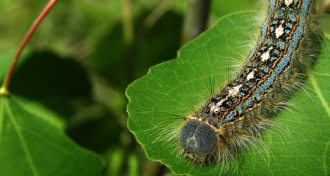 Animals
AnimalsInsects may undermine trees’ ability to store carbon
Insects eat more leaves on trees grown in carbon dioxide-rich environments than those grown without the extra CO2. That may undermine forests as carbon sinks in the future.
-
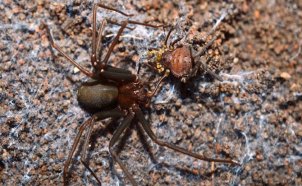 Animals
AnimalsDelicate spider takes down tough prey by attacking weak spots
The Loxosceles gaucho recluse spider can take down a heavily armored harvestman by attacking its weak spots, a new study reveals.
-
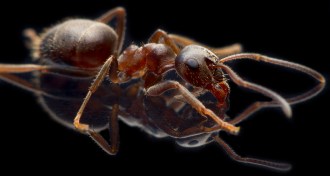 Animals
AnimalsWhere an ant goes when it’s gotta go
Scientists found black garden ants defecating in certain spots inside their nests. The researchers say these spots serve as ant toilets.
-
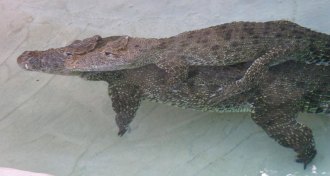 Animals
AnimalsFive surprising animals that play
No one is shocked to find playful behavior in a cat, dog or other mammal. But scientists have documented play in plenty of other species, including reptiles and insects.
-
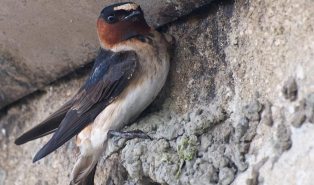 Animals
AnimalsCliff swallow breeding thwarted by bird version of bedbugs
A 30-year study of cliff swallows in Nebraska finds that the birds will abandon nests, rather than have a second brood, when their homes are infested with swallow bugs.
-
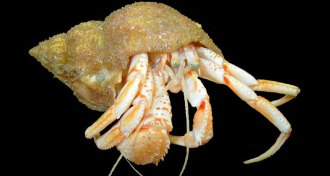 Animals
AnimalsFertile hermit crabs turn shy
Male hermit crabs that aren’t carrying much sperm are bolder than their more fertile brethren, a new study finds.
-
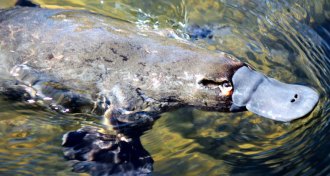 Animals
AnimalsCats and foxes are driving Australia’s mammals extinct
Since the arrival of Europeans in Australia, a startling number of mammal species have disappeared. A new study puts much of the blame on introduced cats and foxes.